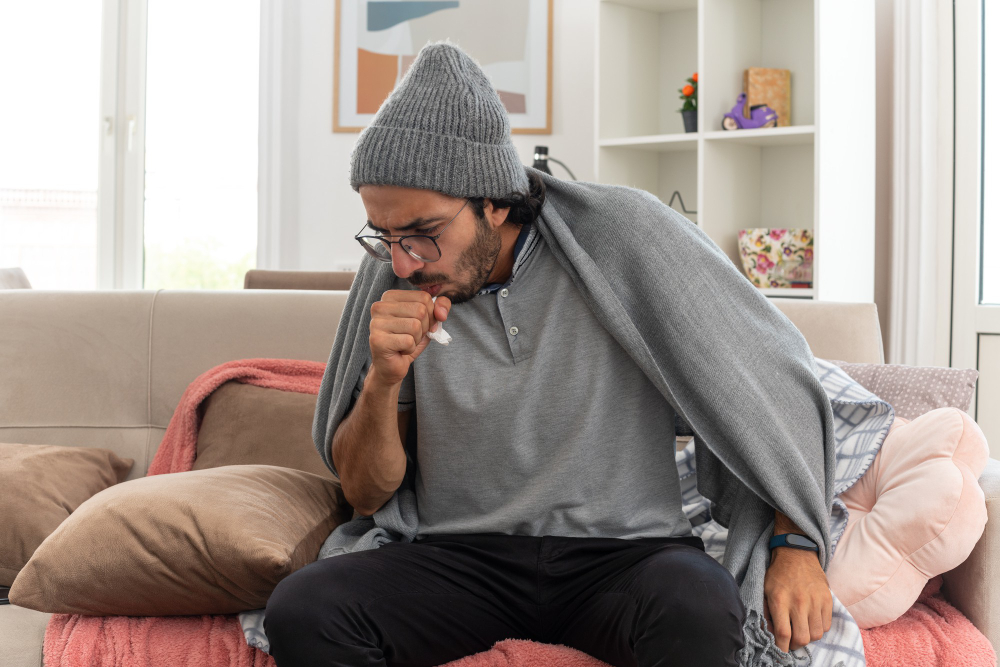Mountain Cedar Pollen

Why is mountain cedar so disliked?
First, let’s dig into mountain cedar a little. Namely, why the tree and its pollen have a reputation for being so ‘hated’. Sounds harsh, but in fact, that’s the exact word used to describe cedar in a December 2017 headline and article in Reporting Texas online. On reddit, we found an actual ‘mountain cedar hate thread’.
“Mountain Cedar Allergy can be a menace when it goes undiagnosed or untreated,” says Dr. Amanda Trott-Gregorio, a board-certified allergist and immunologist at Juniper Allergy.
“Cedar fever is a real thing,” added Trott-Gregorio. While mountain cedar is not the flu or a cold virus it can indirectly cause a fever, according to Trott-Gregorio. She says some patients experience so much inflammation due to fighting the pollen, which is viewed as a foreign invader to their immune systems, that they can actually develop a fever without an infection.
But other trees produce pollen and have not been given such notorious nicknames, you may be thinking.
Those trees, however, are not nearly as populated and dense as the Juniper Ashe. “What we have is a numbers game,” says Dr. Trott-Gregorio. “There are just so many junipers packed in so tightly together and all these cedar trees are producing pollen at the same time.”
The effect? A higher concentration of pollen in the air. Add a little wind into the mix and you’ve got pollen blowing all over the greater San Antonio area and right onto people’s clothing, into hair and pet fur, and into noses and eyes. If you keep your home and vehicle windows open it will blow through those too.
A second reason mountain cedar is revered has to do more with the tree than its pollen. Cedar has garnered a reputation for being an invader of grasslands and a water hog, which more recent articles and points of view challenge.

Pollen problems
For allergy sufferers, however, it is the mountain cedar tree’s pollen at the root of their misery.
While most trees release pollen in the spring, the Ashe Juniper tree, in Texas, releases its cedar pollen during winter. A typical season lasts from as early as late November to mid-February.
Most experts will tell you that areas of Texas west of 1-35 get the worst of mountain cedar pollen. But if there’s wind in the forecast, do not mark yourself safe from cedar either! A good gust of wind can carry concentrated mountain cedar pollen for up to 100 miles!
Cedar fever symptoms
Another issue with mountain cedar allergy is when, seasonally, the trees release their pollen. Since this happens during the winter the timing in which mass amounts of visually taunting pollen clouds are released coincides with the typical yearly influx of cold and flu viruses, infections, and coronavirus.
Symptoms can resemble one another, further confusing allergy sufferers.
So let’s take a look.
- Scratchy throat
- Sneezing fits
- Runny or stuffy nose
- Itchy, burning, red, or watery eyes
- Cough
- Headache
- Lethargy
- Fever (typically under 101.5)
Cedar allergy symptoms typically will not include:
- Fever over 101.5
- Diarrhea
- Vomiting

Cedar treatment (and the one thing that changed my life)
At the time I was diagnosed with mountain cedar allergy I did not know much about it. I had heard the term ‘cedar fever’ but having moved to San Antonio, Texas from Colorado, I was unfamiliar with allergy treatment. Period.
In fact, having grown up on the east coast prior to living in the midwest I knew of few if any friends who saw allergists. Upon moving to Texas, I noticed that nearly everybody has an allergist on speed dial.

- Antihistamines
- Regular saline nasal rinsing
- Nasal steroid sprays
- Allergy immunotherapy (aka allergy shots)
“If I have a patient whose allergy skin test reveals a severe allergy to mountain cedar or if mountain cedar is just one of multiple positive environmental allergies I will usually suggest allergy shots as a best-choice option,” Dr. Trott-Gregorio says. “We know that it works very well.”
As someone who has been getting allergy injections for almost three years now to help with mountain cedar allergy, I can confidently say Dr. Trott-Gregorio’s not wrong.
Life on allergy immunotherapy
Before allergy shots for mountain cedar allergy I was tired all the time. My head hurt, my eyes were sore, and I would experience itching in my ears at times. I didn’t feel productive – at home or at my work.
After starting allergy shots, I feel amazing.
Not okay.
Not decent.
But absolutely, amazing.
And because I feel amazing I can once again do amazing (things).
I am sleeping better, I have more energy, I am no longer getting sinus infections, and I no longer take an antihistamine every day, November through February, as I did prior to starting immunotherapy.
But perhaps most excitingly, at least to my fellow football-loving family, I no longer miss out on Super Bowl Sunday shenanigans due to cedar fever! This fun football event that always falls on or following peak mountain cedar season is no longer interrupted by sinus infections and fever caused by allergies gone untreated.
And in my book, that’s a huge win – no matter who’s playing in the Super Bowl.
Erin Kirwan is a patient at Juniper Allergy. She’s also a writer, former broadcast journalist, and owner at Savvy Media PR.

